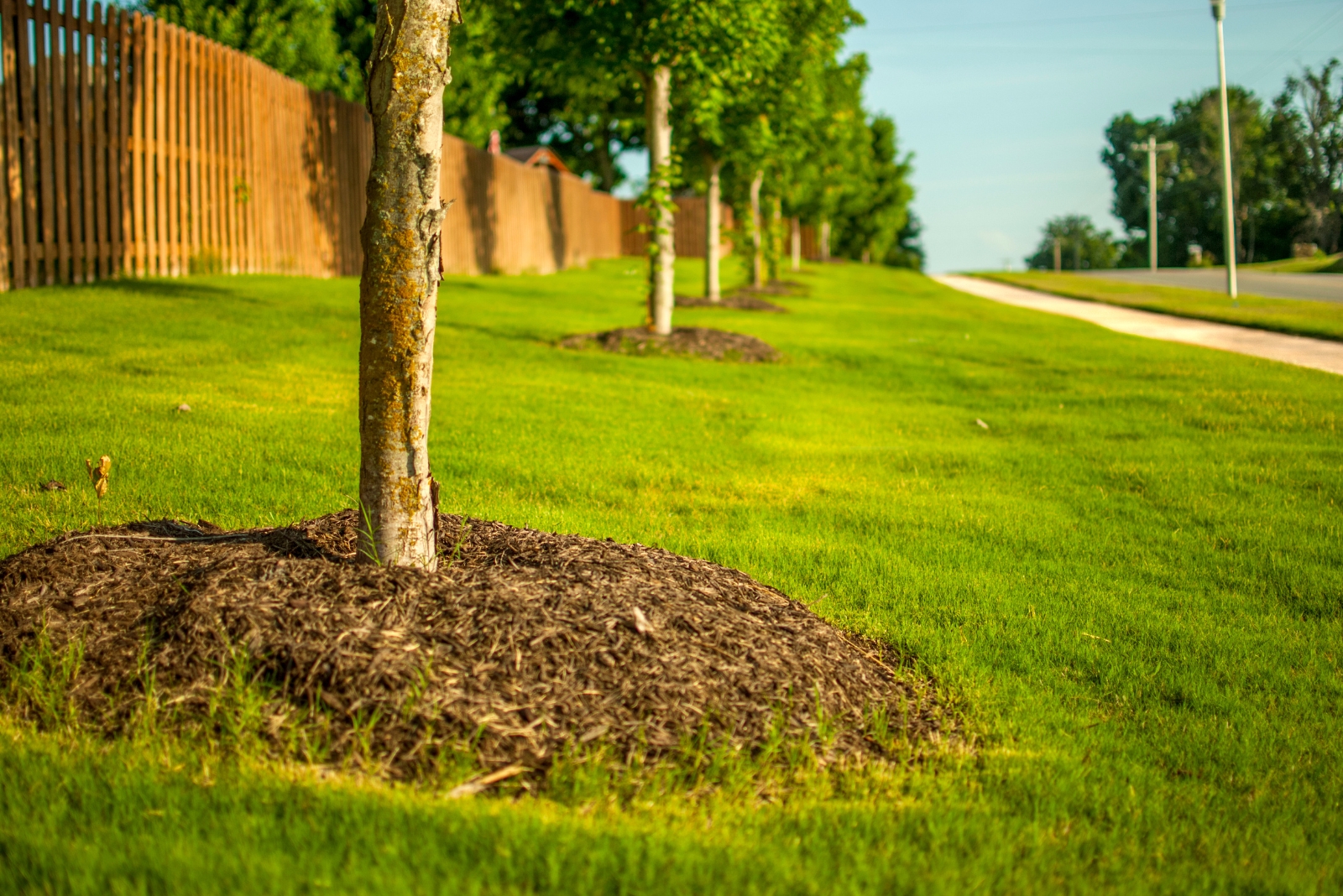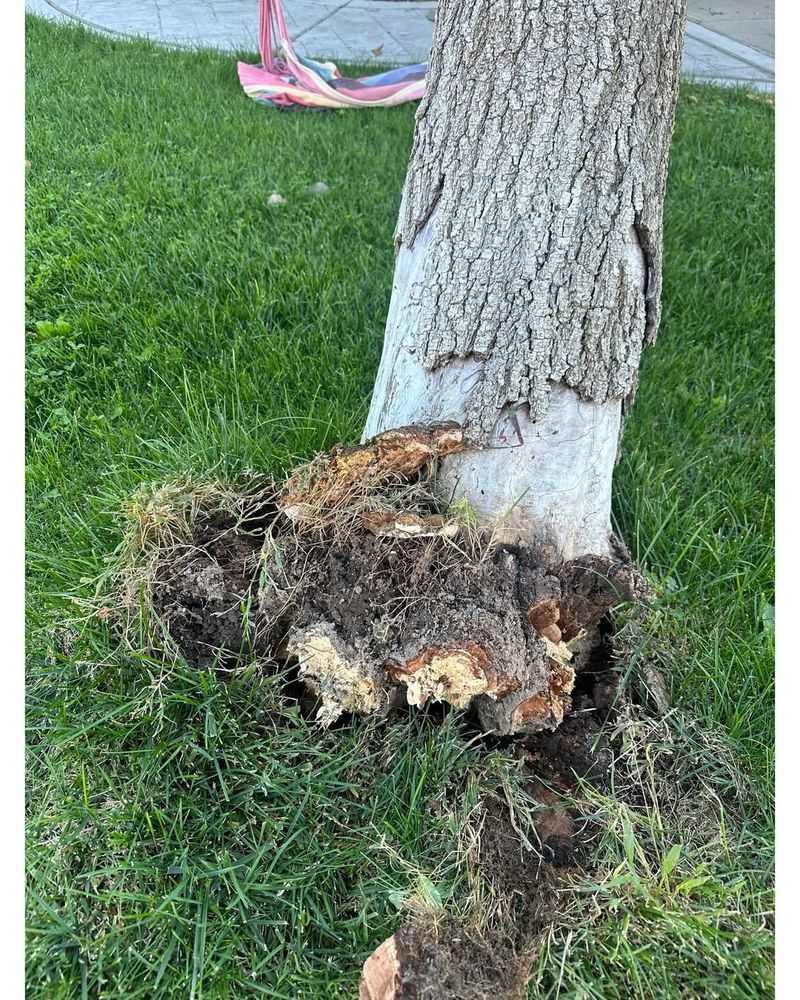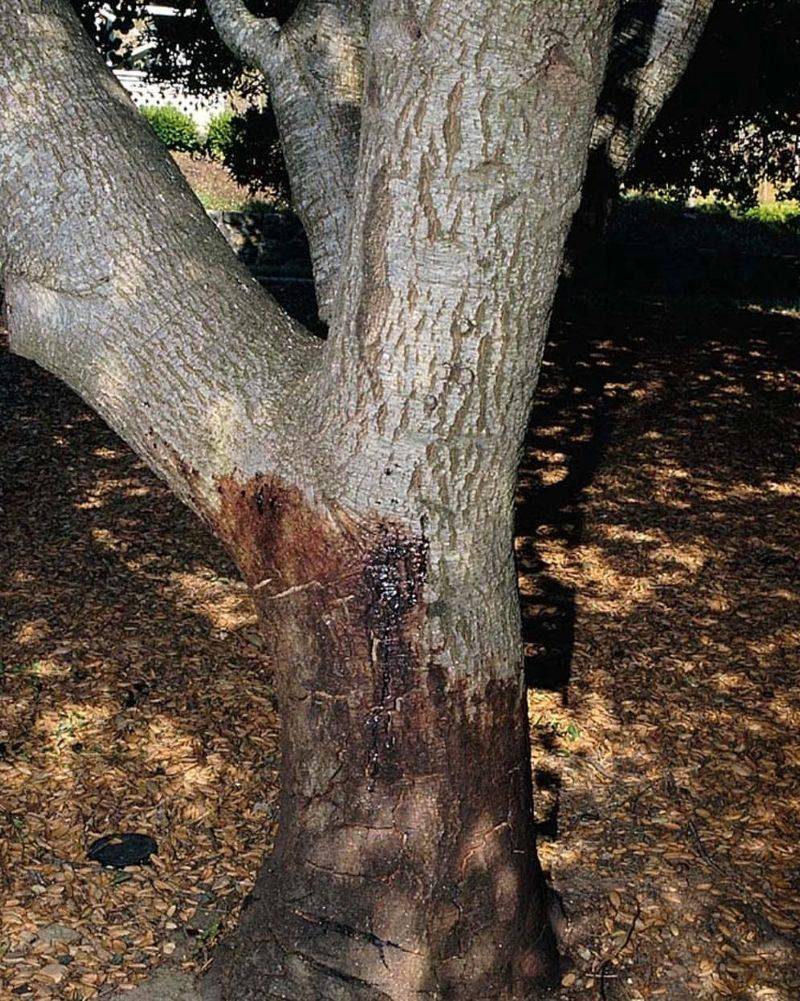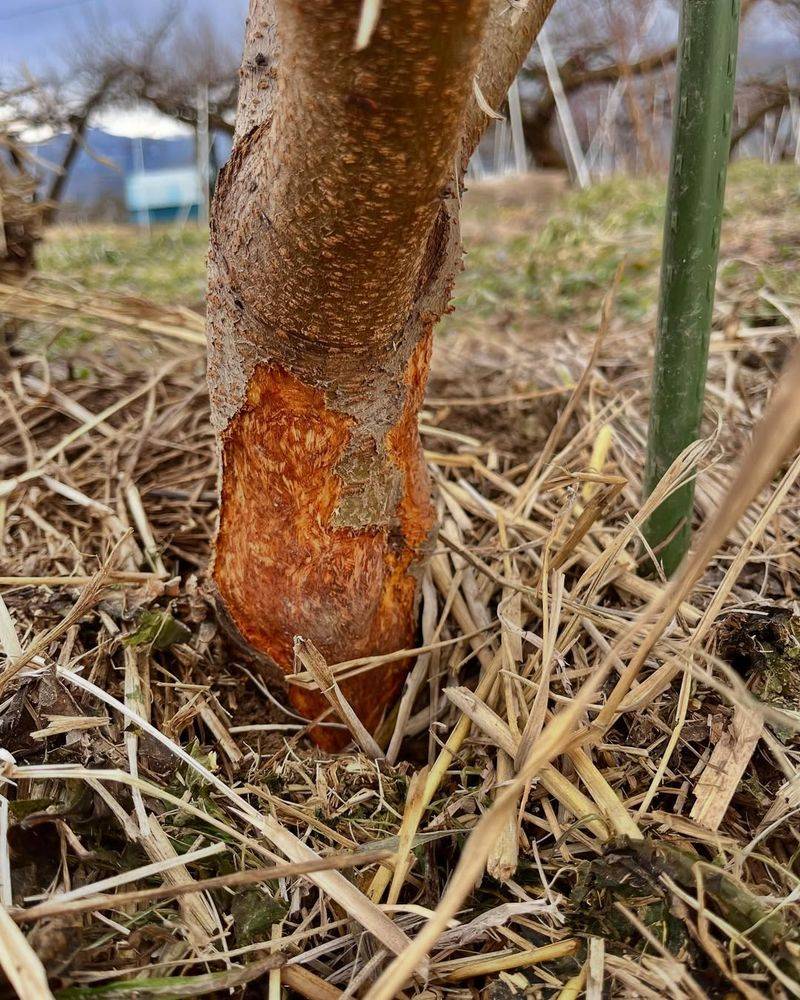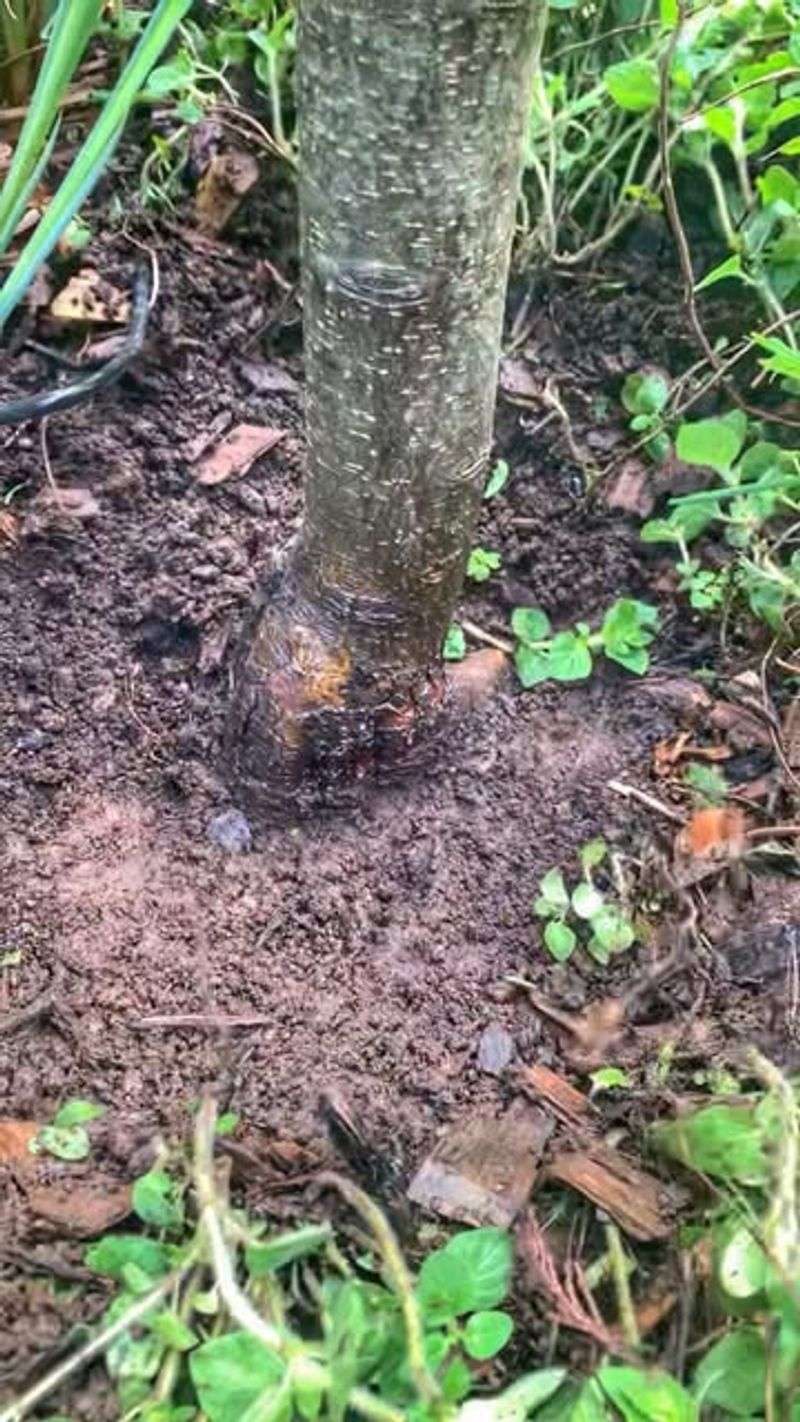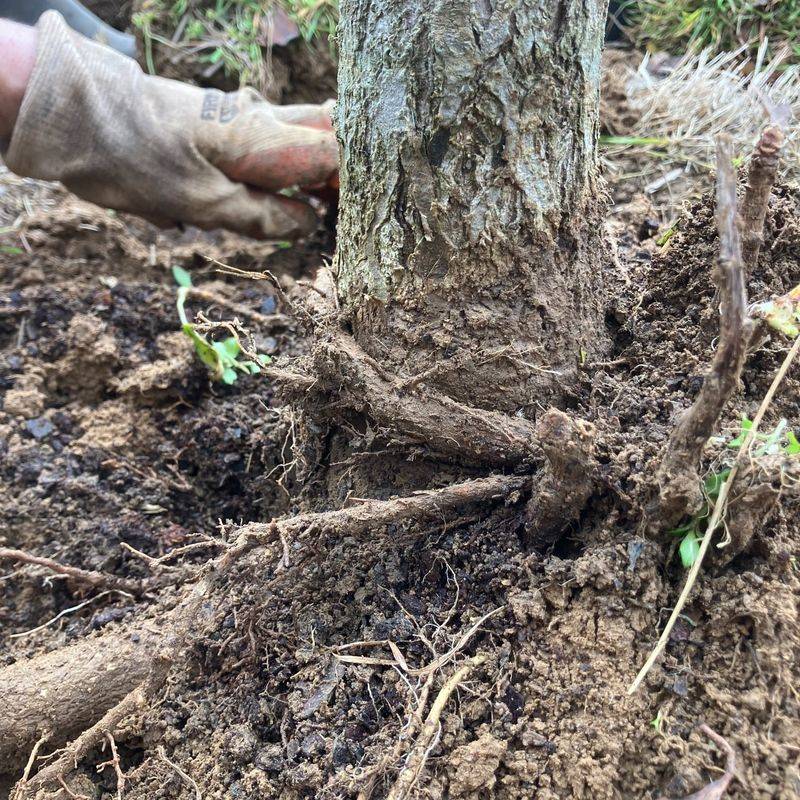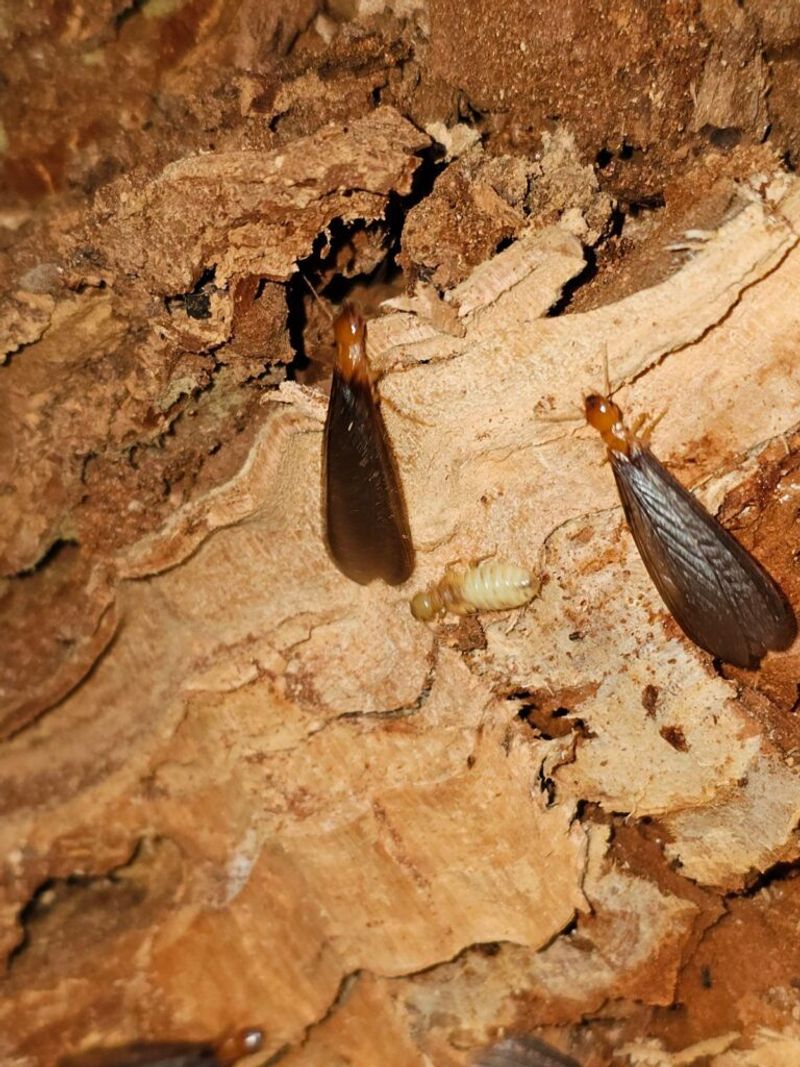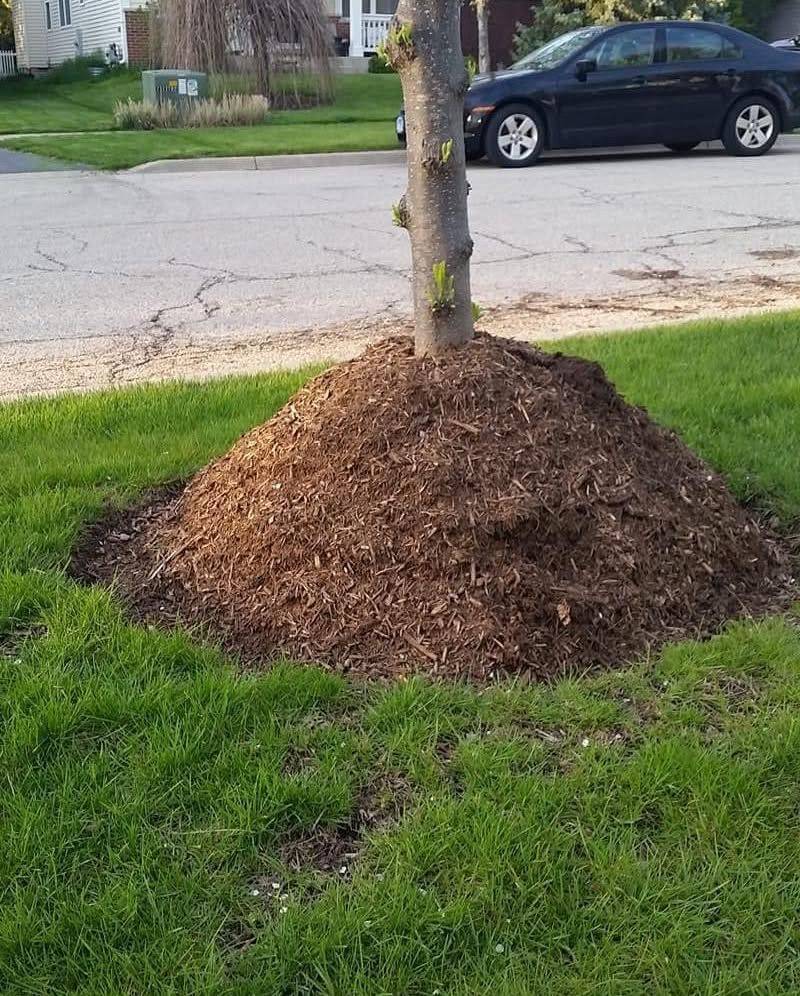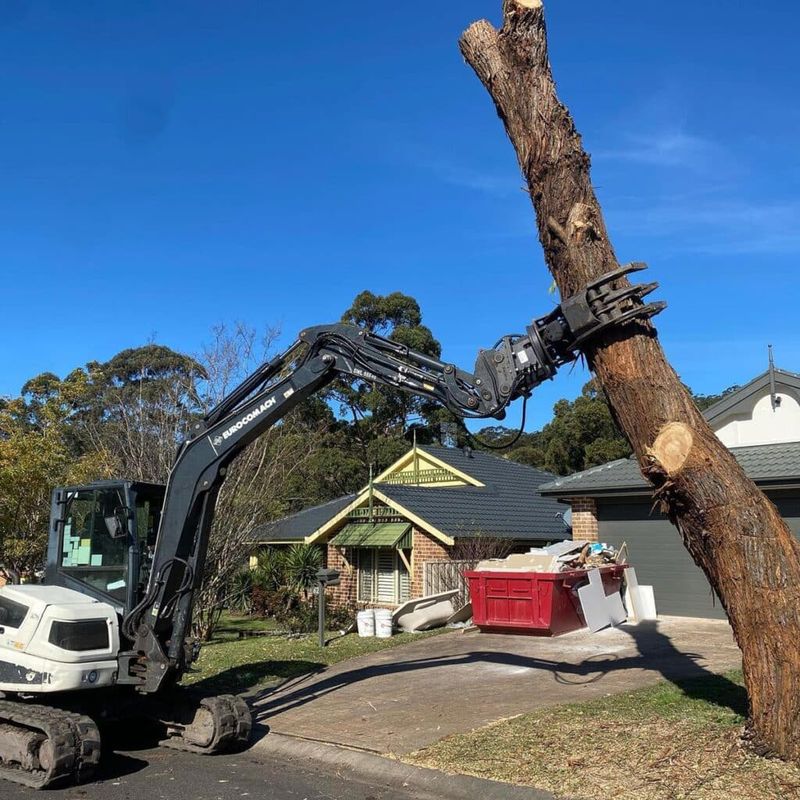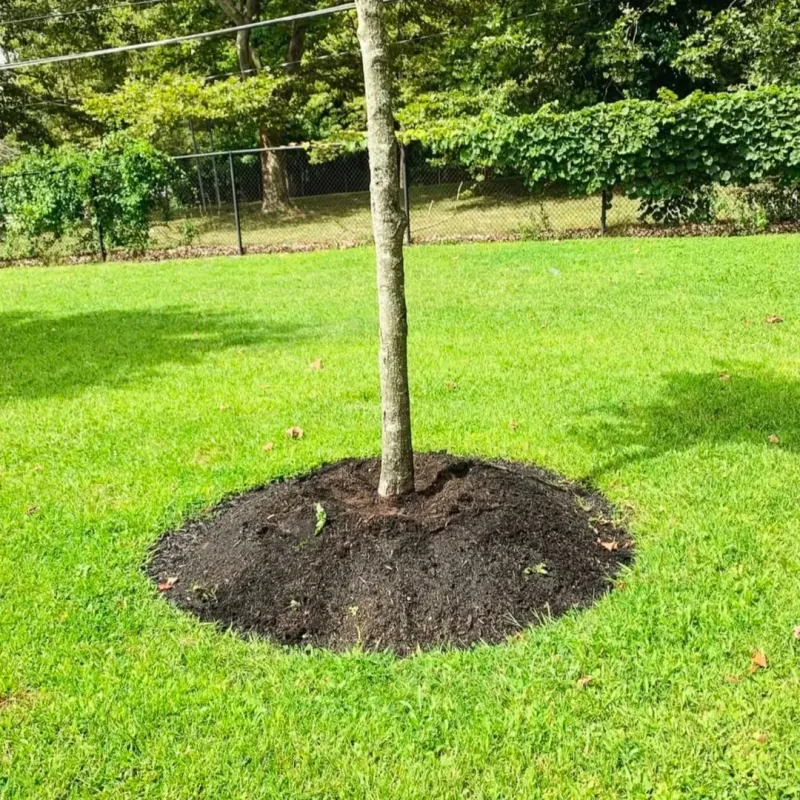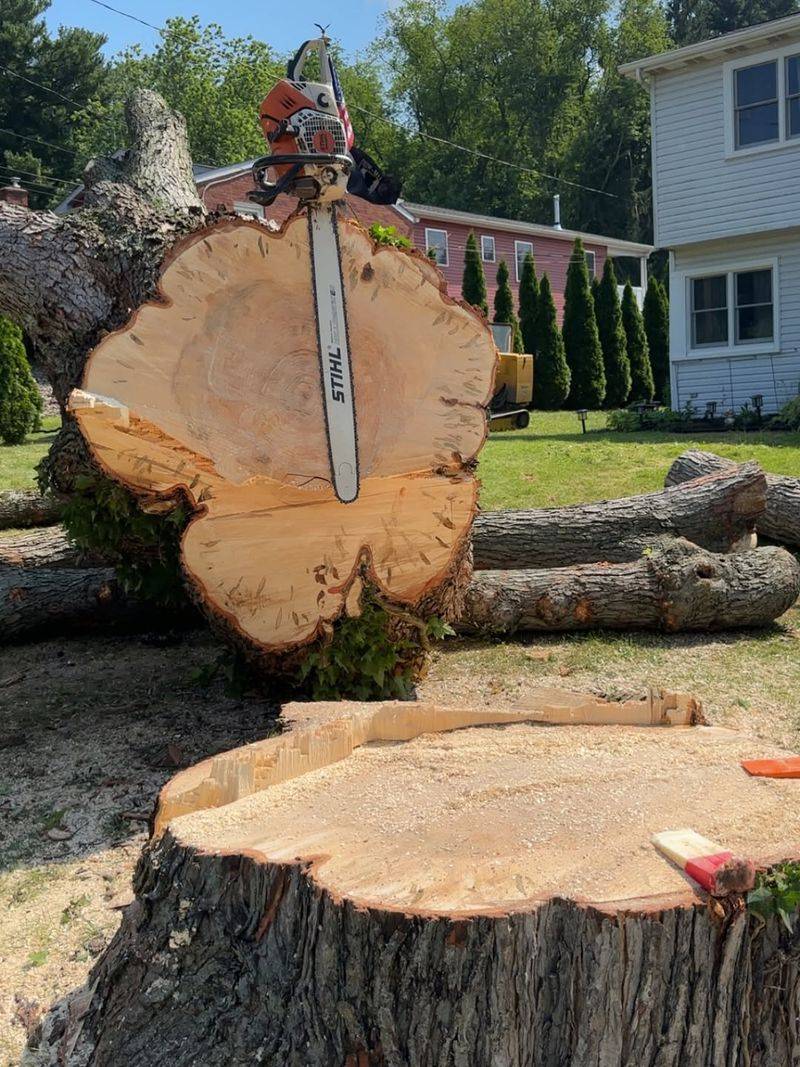You’ve probably seen it — a neat, cone-shaped mound of mulch piled high around a tree trunk like a mini volcano. It looks tidy, right? But in Michigan yards, this so-called “volcano mulching” habit can do more harm than good.
Beneath that mountain of mulch, your tree could be suffocating, rotting, or inviting pests to dinner. What seems like a simple weekend project might quietly spell disaster for your landscape.
1. Root Rot Takes Over
When mulch piles up against tree bark, moisture gets trapped and stays there way too long. Bark needs to breathe and stay relatively dry, but volcano mulching prevents this natural process.
Constant wetness creates the perfect environment for harmful fungi and bacteria to grow. Soon, the bark starts breaking down and rotting from the inside out.
Rotted roots cannot absorb water and nutrients properly, weakening your entire tree over time.
2. Bark Disease Spreads Rapidly
Moist mulch touching tree bark opens the door for canker diseases and other infections. Your tree’s bark acts like protective skin, but when constantly wet, it becomes vulnerable to attack.
Diseases spread quickly in Michigan’s humid climate, especially during spring and summer. Once infection takes hold, dark spots and oozing sap often appear on the trunk.
Treating bark diseases requires removing infected areas and proper care, which costs time and money.
3. Rodents Make Their Home
Mice, voles, and other small critters absolutely love volcano mulch piles because they provide warm, cozy shelter. Michigan winters drive rodents to seek protected spots, and your mulch mountain becomes prime real estate.
Once settled in, these animals gnaw on tree bark for food and nesting material. Their chewing creates wounds that expose inner wood to pests and disease.
A single winter of rodent damage can girdle a tree completely, killing it by spring.
4. Suffocated Roots Struggle
Tree roots need oxygen just like you need air to breathe. Volcano mulching buries the root flare too deeply, cutting off essential oxygen flow to the root system.
Without adequate oxygen, roots cannot function properly or grow strong. Suffocated roots eventually die off, reducing the tree’s stability and ability to absorb nutrients.
Your tree may look fine above ground for years before suddenly declining rapidly and unexpectedly.
5. Girdling Roots Develop
Something strange happens when roots grow in the wrong direction around the trunk instead of outward. Volcano mulching encourages roots to grow upward into the moist mulch pile rather than spreading into soil.
As these misguided roots thicken, they wrap around the trunk like a noose, choking off water and nutrient flow. Girdling roots slowly strangle trees from the outside in.
By the time symptoms appear, the damage is often too severe to reverse completely.
6. Insect Invasions Increase
Damp mulch piled high creates a bug paradise right against your tree trunk. Carpenter ants, termites, and bark beetles thrive in moist wood and decomposing organic matter.
Michigan’s warm summers give insects perfect conditions to multiply rapidly in volcano mulch. Once established, insect colonies tunnel into weakened bark and cause extensive structural damage.
Pest infestations often require expensive professional treatments and may never be fully eliminated from affected trees.
7. Nutrient Imbalance Occurs
Thick mulch layers steal nitrogen from soil as they decompose, leaving less for your tree. Microorganisms breaking down mulch need nitrogen for their work, competing directly with tree roots.
Michigan’s clay soils already challenge nutrient availability, and volcano mulching makes matters worse. Trees show yellowing leaves and stunted growth when nitrogen-starved.
Correcting nutrient deficiencies requires soil testing, amendments, and patience as your tree slowly recovers its health.
8. Unstable Trees Topple
Shallow root systems develop when volcano mulching discourages deep root growth. Trees with inadequate anchoring roots become dangerously unstable, especially during Michigan’s fierce storms.
Strong winds and heavy snow loads easily topple poorly rooted trees onto homes, cars, and power lines. Property damage from fallen trees costs thousands of dollars to repair.
Preventing instability means proper mulching from the start, giving roots reason to grow deep and strong naturally.
9. Reduced Tree Lifespan
All these problems combined dramatically shorten how long your trees live. A healthy oak or maple might thrive for 100 years, but volcano mulching can cut that lifespan in half or more.
Replacing mature trees costs hundreds or thousands of dollars, not counting lost shade and beauty. Michigan’s harsh winters already stress trees without adding mulching mistakes to the mix.
Protecting your investment means mulching correctly from day one and fixing mistakes immediately when spotted.
10. Costly Removal Becomes Necessary
Dead or dying trees pose safety hazards and must be removed before they fall unexpectedly. Professional tree removal in Michigan typically costs between $500 and $2,000 depending on size and location.
Emergency removals after storms cost even more because demand skyrockets and accessibility becomes difficult. Insurance may not cover removal if neglect or improper care caused the tree’s decline.
Spending a few minutes mulching correctly saves you from expensive removal bills down the road.

